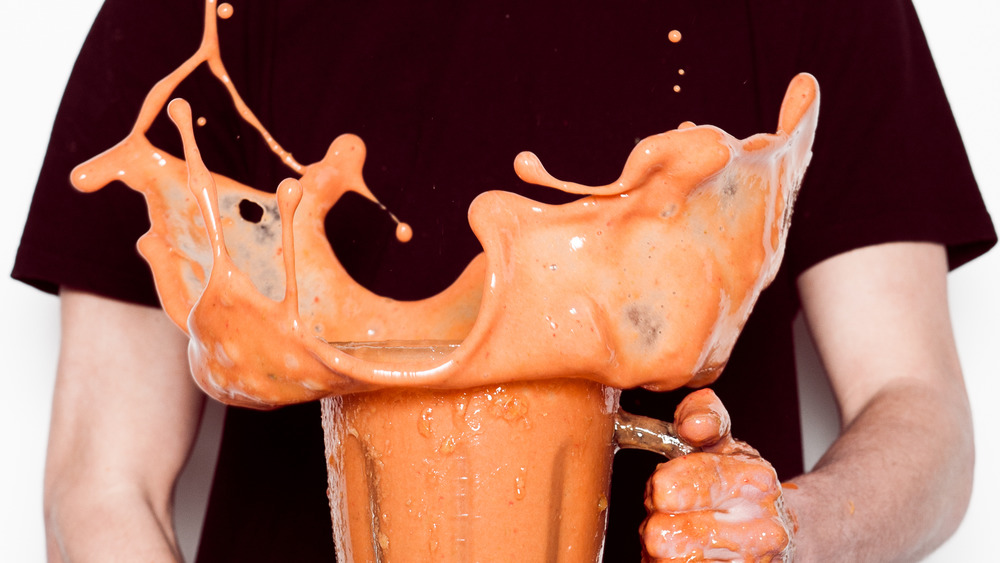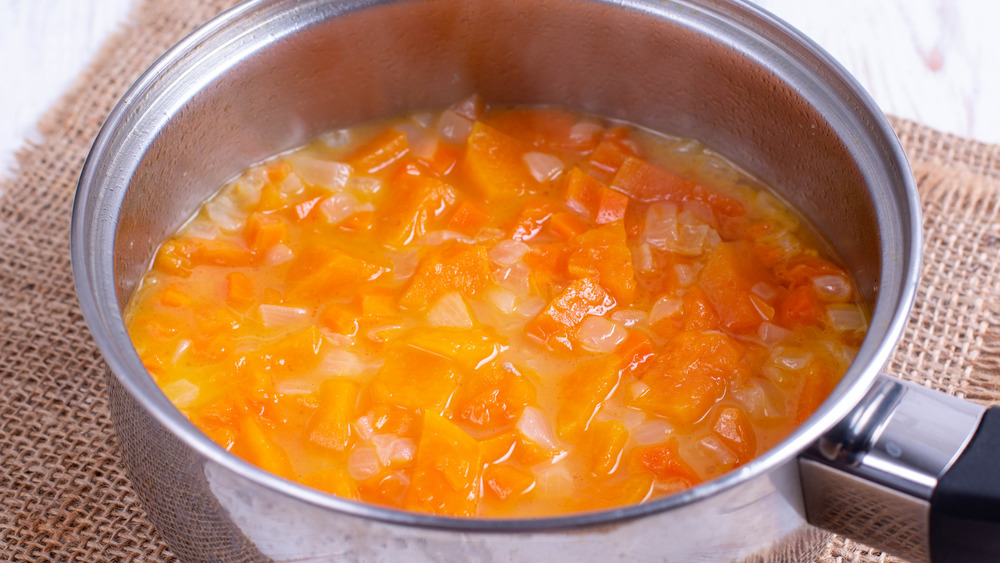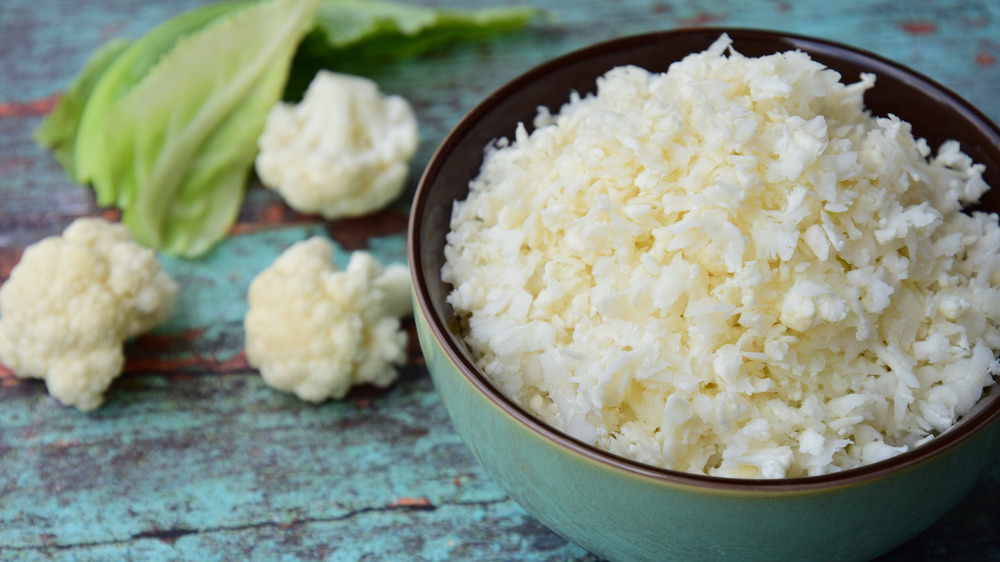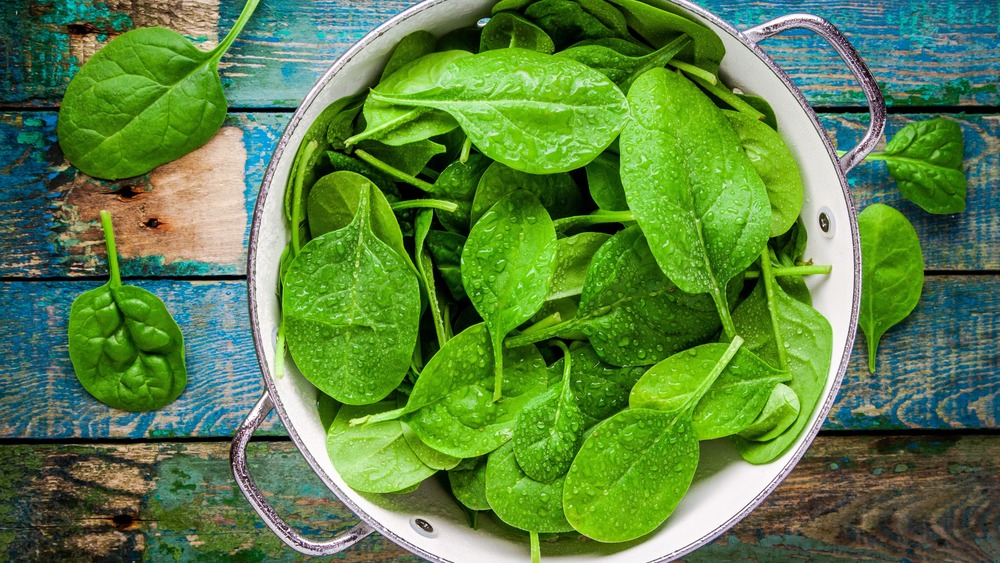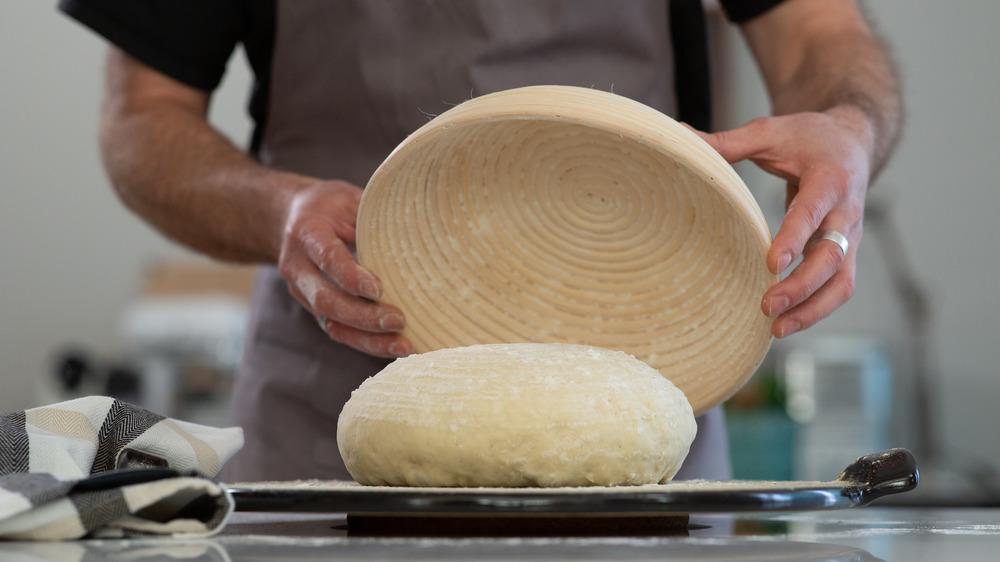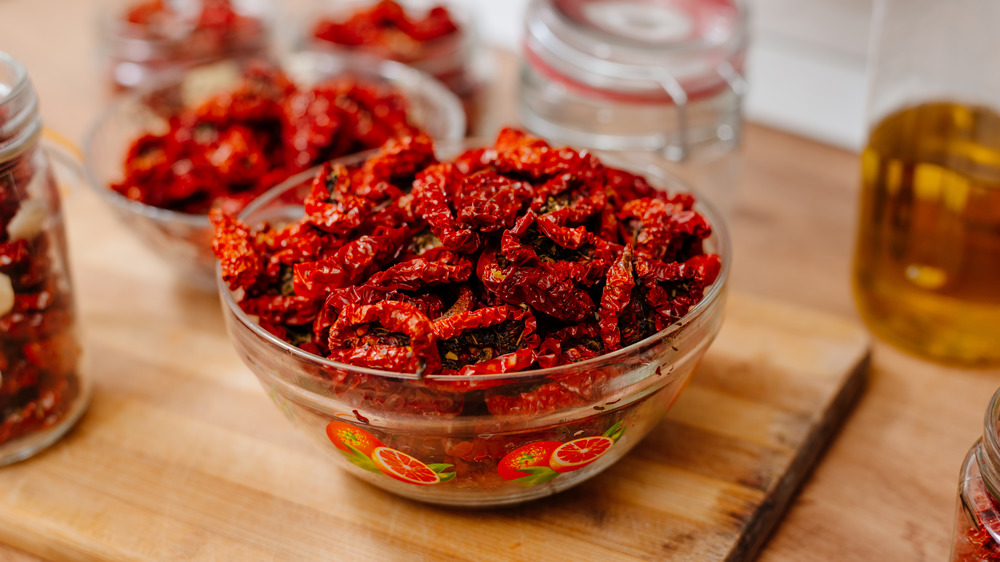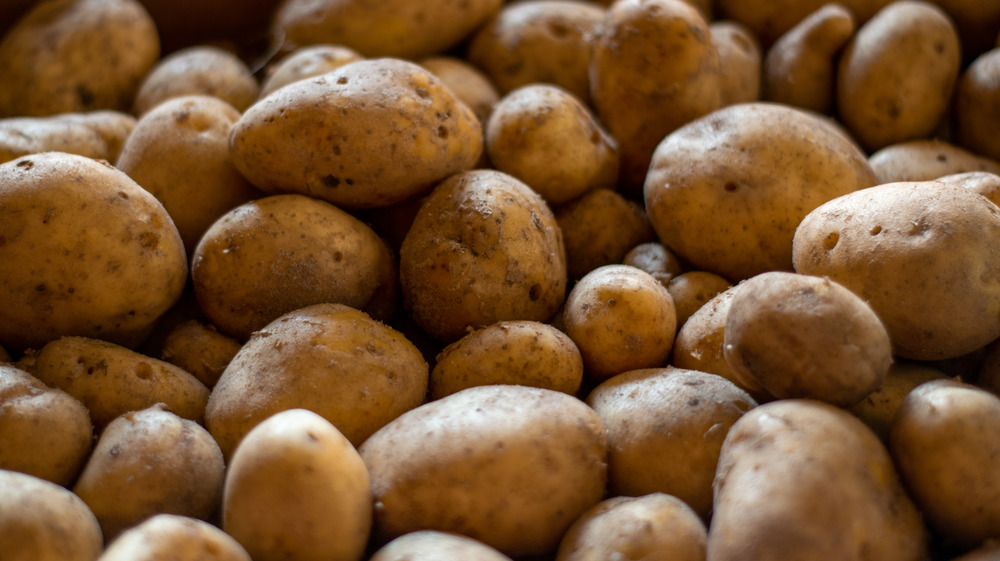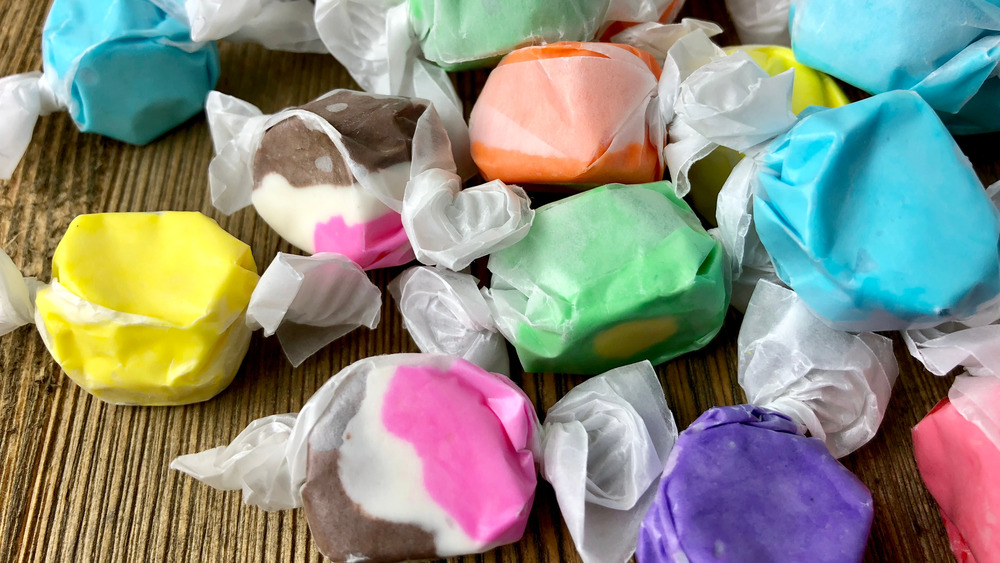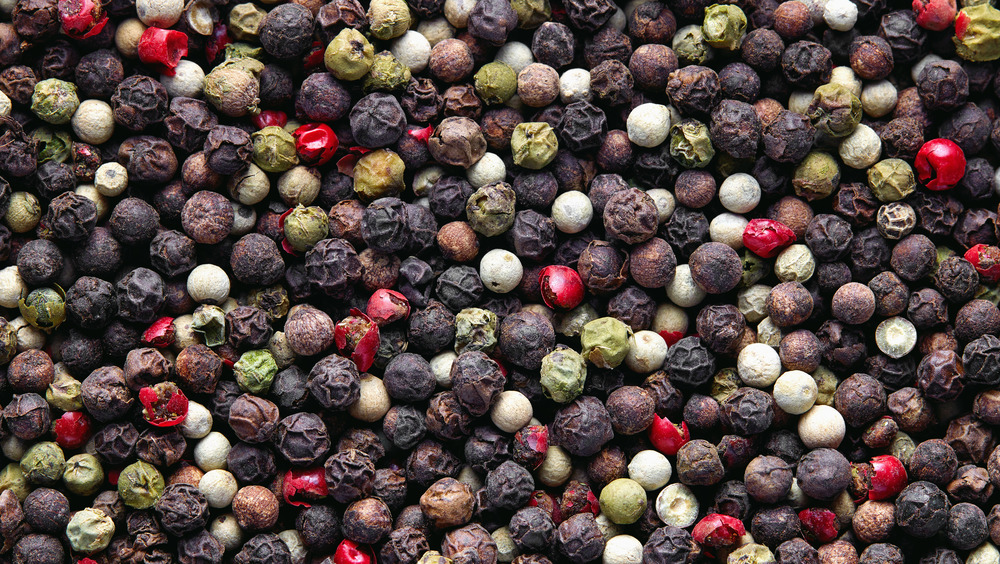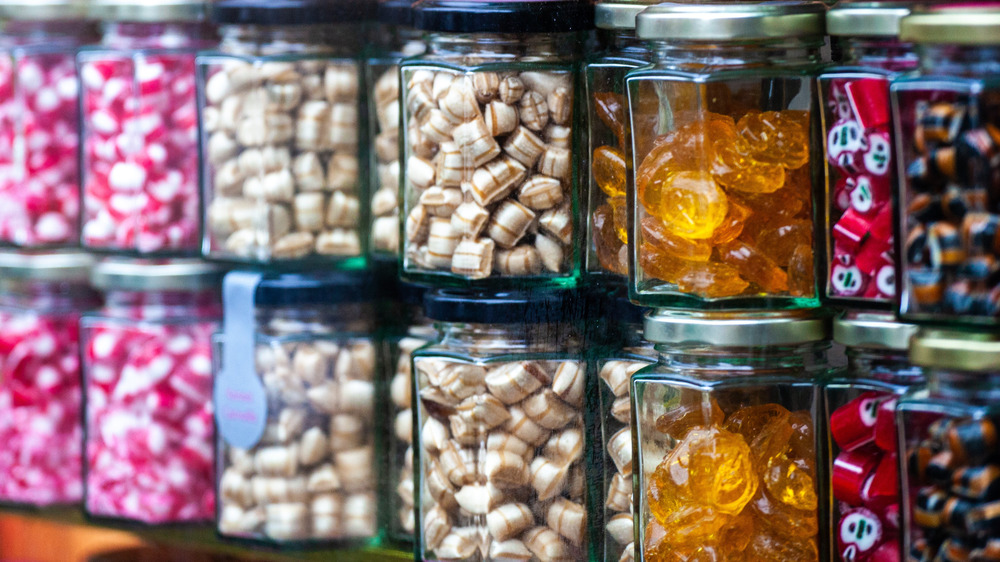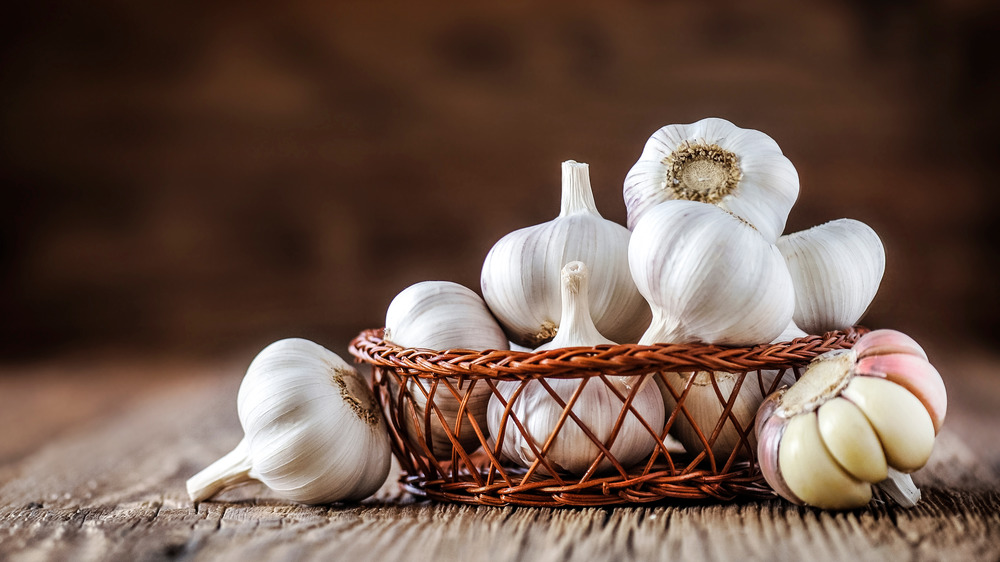Foods You Should Never Put In A Blender
We may receive a commission on purchases made from links.
Back in 1922, inventor Stephen Poplawski revolutionized kitchens around the globe when he put a spinning blade at the bottom of a tall container, creating the world's first blender. Poplawski was just trying to make frothier, better tasting drinks at his soda fountain — but in the process, he forever changed the way we chop and process and prepare an infinite number of foods.
Thanks to Poplawski and that first blender, we got smoothies. We are now able to easily make margaritas and other formerly "exotic" frozen cocktails. We can now make milkshakes and smooth sauces and gravies. Homemade mayonnaise and nut butters became easier than ever to throw together on the fly.
But along with all the foods you could now make in a blender came a long list of things to avoid as well — a list that lives on even today. Don't put your hands or other body parts in the blender ... obviously. Don't put spoons or other utensils in your blender. Don't put anything with bones in a blender — they'll shatter and break and you'll never be able to remove the fragments from your food. Don't put large chunks of ice that are obviously too big for the blender's blades and motor to process in your blender canister. And don't put in the foods that follow ... even if you think you should or that the results won't be that bad. Trust us. You — and your blender — will be sorry you tried!
Hot liquids can cause an explosive spill
Whether you're trying to make a creamy roasted red pepper soup, a hearty pumpkin chowder, or a classic silky tomato bisque, pouring the contents of a scalding hot saucepan into your trusty blender and hitting puree might seem like an okay thing to do. But in reality, putting hot liquids in a blender is actually one of the most dangerous mistakes you can make in a kitchen.
"Hot liquids give off steam, and that steam quickly creates pressure in a blender," nutritionist Elle Penner told Eating Well. "Because of this, the blending process can cause the liquid to explode and potentially burn anyone nearby."
Instead, if you need to process and smooth a super hot soup or sauce, Penner recommends using an immersion blender instead. If you don't have one, at least plan to blend safely. "Let your liquid cool down for at least five minutes before transferring it to your blender," suggests Food Network, "and fill the blender no more than halfway."
Also, be sure to remove the stopper — the middle portion of the blender's lid — so excess steam can escape while you process your soup. To avoid splatters, hold the stopperless lid down tightly with a clean kitchen towel while the blender is running (via TheKitchn). And keep your face out of the line of fire, just in case a spill should occur.
Making cauliflower rice can lead to cauliflower soup
Cauliflower is still having its moment. But when it comes to the way most people are eating cauliflower today — cauliflower mash or cauliflower rice — a blender is definitely not the tool to use.
The problem, as home chef Paula Rhodes explains on her food blog Salad in a Jar, is that cauliflower is inherently soggy when you cook it. It simply retains too much water, whether you boil it, steam it, or even microwave it. Rhodes said that she is always frustrated by how soggy her cauliflower ends up when she blends it. The foodies at SkinnyTaste agree, warning that it's very easy to over-process cooked cauliflower when you add it to a blender, essentially turning it into a bland and flavorless soup.
A blender is no better for turning raw cauliflower into cauliflower rice, warned nutritionist Jodi Greebel. "The way a blender chops makes it mushy rather than the desired consistency of cauliflower rice," she told Eating Well.
Instead, for cauliflower rice, Delish suggests you "use either a food processor or a box grater." Both work great, the site said. Just cut raw cauliflower into large florets and grate or process as needed.
As for cauliflower mash, Inspired Taste has recommended using an old-school potato masher on cooked cauliflower florets. It's fast, requires less cleanup, and provides just the right slightly chunky consistency, just like you find in regular mashed potatoes.
Warm leafy greens will turn brown
Like all leafy greens, kale, arugula, spinach, Swiss chard, and collard greens are all ideal options for healthy, low-calorie smoothies. They're low in sugar, high in fiber, and packed with an alphabet's worth of vitamins, including abundant levels of A, C, and K in particular. Leafy greens are also good for your heart, your waistline, and even your brain, potentially helping to reduce cognitive decline as we get older (via Simple Green Smoothies).
But as good as leafy greens are for you, and as great as they are in a smoothie, there's one cardinal rule everyone should follow: never put warm or room temperature leafy greens in your blender!
"The motor can easily turn your dish brown," warned chef Andre Sickinger in an interview with Reader's Digest. "To keep colors vibrant, ice your greens for 5 minutes prior to adding to the blender," he advised.
That brown color is the result of oxygen reacting with compounds within the fresh produce leaves. The older fruits or vegetables are, or the warmer they are, the more easily these reactions can occur. Adding a dash of lemon or lime juice or other acidic liquid can help to slow the discoloration (via Funky Smoothies). You can also chill leafy greens in the fridge or an ice bath before blending to help slow the reaction.
Dough will wind up chewy and tough
If you don't have a KitchenAid, or just don't feel like breaking out all the attachments for your stand mixer, a blender might seem like a good alternative to make your baking dough. That motor spins, right? It can obviously mix dough. Wrong!
According to Bob Vila magazine, foods with "a very thick consistency [like dough] become incredibly gooey" if you put them in the blender. Even worse: "Dense foods tend to prevent the blades of the blender from spinning in an efficient manner, which makes the motor work harder, resulting in overheating." This can destroy not only your appliance's motor but could potentially even trigger an electrical fire.
Reader's Digest Best Health and PureWow agree, warning that trying to make dough in a blender will lead to a product that's incredibly tough or that won't be properly mixed, with ingredients that are poorly incorporated.
The easiest way to mix dough doesn't even require an appliance. All you need is a bowl, a wooden spoon, and your hands, according to Williams Sonoma. The wooden spoon is ideal for mixing because it's tough and dough won't stick to it while you stir. And as for kneading the dough, your hands will do a better job at stretching it and folding it over — creating flakey layers — than your blender could ever hope to.
Dried fruits can leave your blender dull
From dried apricot muffins to sun-dried tomato pesto to dried plum coffee cake, there are countless ways dried fruits and vegetables can be used in cooking and baking. But no matter what you're preparing that contains dried fruits, there's one rule that holds true for all recipes: don't put your dried fruits or veggies in the blender!
If you have a superpowered, high-end blender like a Vitamix, dried fruits might not be a problem — but for average everyday blenders, dried fruits are a definite no-no. Bob Vila magazine has warned that "dehydrated foods like sun-dried tomatoes and prunes can dull [blender] blades."
TheKitchn agreed, cautioning "the leathery, tough texture of dried fruit and sun-dried tomatoes can easily stick to the blades and even ruin them."
"Unless you want to spend an afternoon excavating sticky fruit paste from the bottom of your blender with a butter knife, don't try blending dried fruit or sun-dried tomatoes," advised Southern Living.
Still wanna try it? Then at least be sure to soak whatever dried fruit you're using in water in order to help hydrate it, making those dried goods softer and easier for your blender to chop and process.
Mashed potatoes will taste like glue
Mashed potatoes are the epitome of comfort food. But if you're looking for airy mashed potatoes just like your grandma used to make, don't try to whip them in a blender.
"Mashed potatoes require elbow grease — it's unavoidable," advised Southern Living. "Shortcuts to the hard work required for mashed potatoes will inevitably ruin the dish."
That's especially true when it comes to trying to make mashed potatoes in a blender. As the blade and motor on the blender whir along, they'll quickly overwork your potatoes, turning them gummy and soft — or even worse, giving them the chalky, sticky texture of glue. It's the result of all those starches and carbs in the potato, which can quickly become agitated and unpleasant tasting.
If that weren't reason enough to steer clear of processing your 'taters in a blender, the appliance performance wizards at eReplacementParts.com have cautioned that it could be dangerous as well. Tough to process foods can cause the bearings in the blade assembly to seize up and can stress a blender's motor, the site warned. This can create a burning smell and may even cause the motor to overheat or burn out, triggering an electrical fire, warned the accident prevention site Electrical Safety First.
For light, fluffy mashed potatoes, you need to either whip them by hand or use a stand or hand mixer. Both techniques are able to aerate the potato mixture more easily than a traditional blender.
Sticky foods can ruin the motor
Some homemade candies like taffy need to be pulled and stretched when you make them. The process is said to add tiny air bubbles to the sugary treats, helping to give them the light, chewy texture that many people find so addicting.
But stretching candy is also hard work and becomes tiring quickly. That's why a blender might seem like the perfect option to help you get the job done quickly. But that would also be a huge mistake!
Bob Vila magazine has warned that sticky foods like taffy can damage your blender, taxing the motor and leaving a sticky residue on the blender's blades that can be virtually impossible to get off.
Since they're already so sharp to the touch and difficult to clean under ordinary circumstances, cleaning blender blades with stuck on sugar or other sticky substances can be virtually impossible. And should you fail to get that stuck on residue off completely, it could ruin future dishes you blend as well. The sweetness of the candy or the flavors you used when making it could seep into other foods you blend, giving them an odd and unwanted new flavor. Better to steer clear entirely and just pull that taffy by hand.
Black pepper will lead to a dusty mess
Few flavors are as essential to home cooking as black pepper. In a MasterClass article, chef Thomas Keller called black pepper the "king of spices," saying that it heightens flavors, adding depth and "zing" to any dish it touches.
Like most people who cook for a living, Keller suggested always using freshly ground black peppercorns, calling their flavor more "vibrant and powerful" than the pre-ground stuff.
If you don't have a peppermill and want to get on the freshly ground pepper train, a blender might seem like the next best thing. And while you can technically grind black pepper or other spices in a blender, as TheKitchn has pointed out, the site also warned that there are better tools for grinding. "A spice grinder exists for a reason — that (or a mortar and pestle) really is the best tool to grind whole spices," the site cautioned.
Because of their height, blenders easily allow ground spice particles to float up into the air, creating a cloud of spice that can trigger a sneezing fit. They're also just not very good at the job, according to Southern Living which said that blenders "produce an uneven grind and leave chunks of unground spices that you shouldn't put in your food."
If you want a cheap and effective alternative to a peppermill that can be used on all spices, invest in a discount coffee grinder instead, the magazine advised.
Hard candy will blunt the blades
Crushed hard candies are a common ingredient in desserts such as stained glass cookies, chocolate chip cookies, and even brownies. Crushed candy can also be used as a garnish or topping on cakes, pudding, and ice cream. You can use it to add flavor to coffee, tea, or hot chocolate. Some bartenders even recommend coating the rim of fancy sweet cocktails with crushed candy, especially around the holidays.
But whether you're attempting to smash up a bunch of LifeSavers, hard butterscotch or cinnamon disc candies, or peppermint candy canes, you don't want to use your blender to do the pulverizing.
Similar to really large chunks of ice or ultra frozen slabs of fruit, hard candy can quickly dull the blades on even the strongest blender. There's also a chance your blender may overheat, warming up the candy you're attempting to crush or that a bit of unexpected moisture might sneak into your blender canister, in both cases creating an annoying sticky mess that could be virtually impossible to remove.
If you do need to crush candy for some sort of kitchen project, you're better off using a food processor. Or just go old-school and put the candy in one or two thick, quality Ziploc bags. Then use a hammer, meat mallet, or even a sturdy rolling pin to crush your candy as needed, leaving it thick and chunky or smashing it down to a fine powder.
Garlic will leave a funky smell
Whether you're making a garlic hummus or a massive batch of homemade garlic paste, garlic and blenders don't mix. It doesn't matter if you're chopping just a few cloves or several heads of garlic, potent and smelly compounds within the vegetables (and onions and peppers as well) can leak out and latch onto the plastic parts of your blender. In some cases, these juices can permanently taint the smell of your blender and may leave residual flavor as well, warned nutritionist Elle Penner in an interview with Eating Well.
Luckily, there are some ways to work around the problem. "Cooking these foods before blending will lessen the punch left behind, as will blending them in small amounts along with other foods — not by themselves," she said.
If it's too late and your blender is already primed to scare off vampires with its plastic-meets-garlic scent, take heart. There are a few tricks that might help to make the scent go away. You can try pouring baking soda into the bottom of your blender and then filling it halfway with vinegar, topping it off with hot water, and letting it set for several hours. TheKitchn suggests an equally easy home remedy. Partially fill your blender with warm water, add a drop of dish soap plus a couple of fresh lemon wedges, and then puree everything together for a couple minutes. Any unwanted leftover smells should hopefully disappear.
